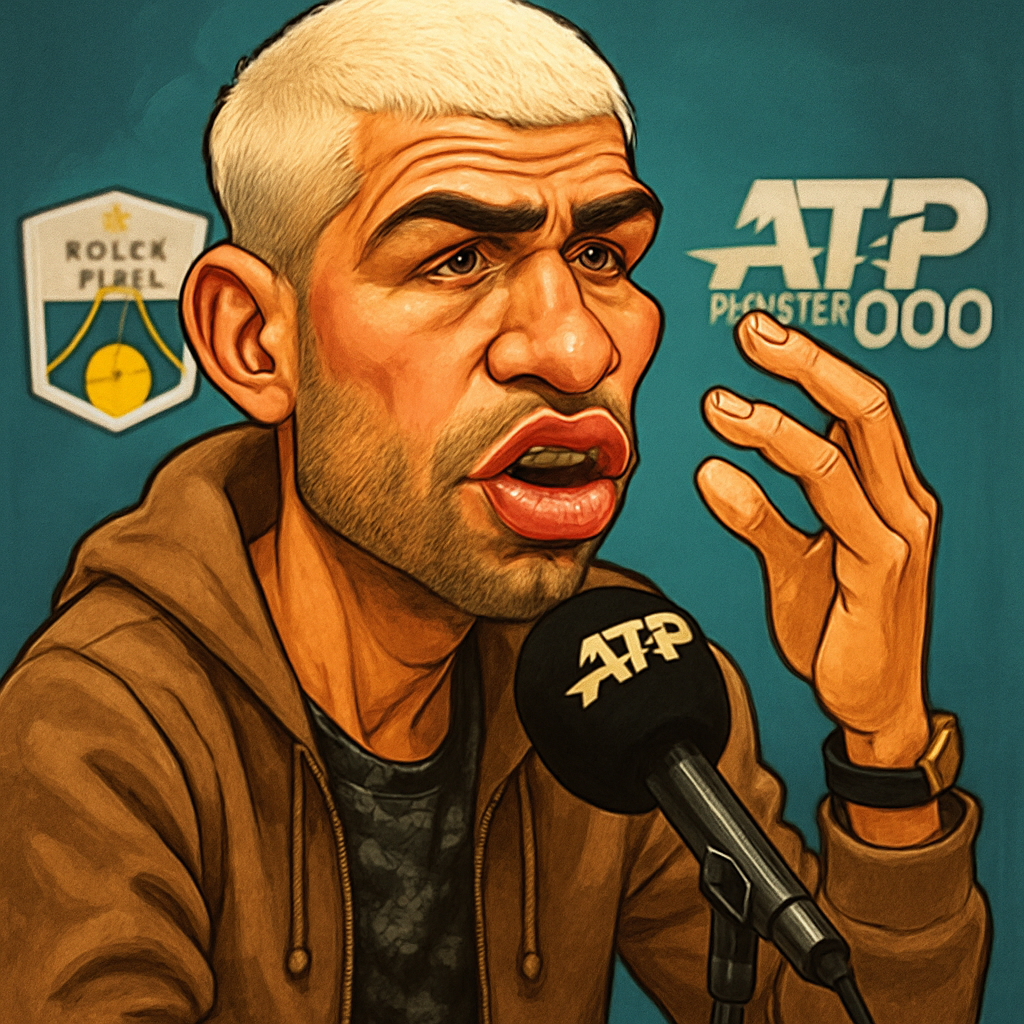In a significant show of unity across the tennis tours, Spanish sensation Carlos Alcaraz has added his powerful voice to a growing chorus of players, including world No. 2 Aryna Sabalenka, demanding immediate action from tennis chiefs to address the increasingly grueling and condensed tournament schedule, which they argue is pushing athletes to their physical and mental limits.
The Plea for Change
The issue was thrust into the spotlight following the Madrid Open, a prestigious two-week combined event where both Alcaraz and Sabalenka suffered unfortunate injuries that forced them to withdraw from subsequent tournaments. Sabalenka, the Belarusian powerhouse, was particularly vocal, labeling the current WTA calendar as "impossible" and a direct threat to players' careers.
Alcaraz, the two-time Grand Slam champion known for his explosive style, has now wholeheartedly echoed Sabalenka's complaint. In a passionate plea to the ATP, WTA, and the International Tennis Federation (ITF), the young Spaniard emphasized that the sport's current structure is unsustainable. "I totally agree with Aryna," Alcaraz stated unequivocally.
A Schedule Under Fire
The core of the players' grievance lies with the relentless nature of the modern tennis calendar. The season is a near-year-long endeavor, with mandatory tournaments, Grand Slams, and premier events stacked back-to-back, leaving minimal time for recovery. Key complaints highlighted by top players include:
- Lack of Recovery Time: The short turnaround between major tournaments, particularly on different surfaces, drastically increases injury risk.
- Condensed Two-Week Events: While prestigious, tournaments like Madrid and Rome being played over two weeks create a longer period of intense competition without a break.
- Conflicting Priorities: The calendar is packed to maximize broadcasting and commercial revenue, often at the expense of athlete well-being.
- Pressure to Play: Mandatory tournament rules and the fear of losing ranking points force players to compete even when not fully fit.
Sabalenka’s frustration boiled over after a physically punishing run in Madrid. "It's too much. The calendar is too packed. We have to speak out... I'm trying to do everything I can, but my body is giving up," she lamented, highlighting the impossible choice between preserving one's health and fulfilling professional obligations.
Alcaraz's Personal Struggle
For Carlos Alcaraz, this is not an abstract concern but a painful reality. His 2024 season has been hampered by a persistent right arm injury, which flared up during his title defense in Madrid, ultimately forcing him to miss the Italian Open in Rome—a crucial warm-up event for Roland Garros. His plea comes from a place of personal experience with the physical toll of the tour. "We have a really long season, with very few weeks off to rest, to stay healthy," Alcaraz explained. "It's a really demanding calendar."
The young star pointed out that the problem is not just the number of tournaments but their intensity and proximity. The transition from hard courts to clay, and then quickly to grass, places unique and severe stresses on the body. Alcaraz argued that the current structure does not allow players to peak for the most important events, as they are often already battling fatigue or niggling injuries. "We finish the season exhausted, and we need a longer period to disconnect, to prepare the preseason, and to start the season at one hundred percent," he added.
The Domino Effect of Injury
The withdrawal of top stars like Alcaraz and Sabalenka from key tournaments creates a domino effect. It disappoints fans, diminishes the competitive field, and impacts the commercial success of the events themselves. This underscores that the current model is not just a player issue, but a business problem for the sport's governing bodies. "Nobody wants to see their favorite players withdrawing from tournaments due to injury," Alcaraz noted.
A Unified Front for Reform
What makes this latest complaint particularly potent is the rare agreement between two of the game's biggest stars from both tours. Such a unified front increases the pressure on the ATP, WTA, and ITF to listen and act. Historically, player complaints about the schedule have been met with slow, incremental changes, but the current wave of sentiment suggests a growing impatience.
Potential solutions being floated by players and pundits include:
- Shortening the official season by several weeks.
- Reducing the number of mandatory tournaments for top players.
- Creating more significant gaps between the clay and grass court swings.
- Implementing a more robust off-season to allow for proper physical preparation.
The plea from Alcaraz and Sabalenka is not merely for their own benefit but for the long-term health of the sport. A generation of players breaking down due to an overloaded calendar is in no one's interest. "We have to take care of the players," Alcaraz urged, framing it as a necessity for tennis's future.
The Ball is in Their Court
The tennis world now waits to see if the governing bodies will respond with more than just sympathetic words. The desperate plea from its brightest young star and a reigning world No. 2 is a clear signal that the status quo is broken. As the sport continues to globalize and the physical demands on athletes intensify, a fundamental review of the calendar is no longer a request but a requirement to safeguard the players who are the lifeblood of the game. The ball, as they say, is firmly in the court of the tennis chiefs.

